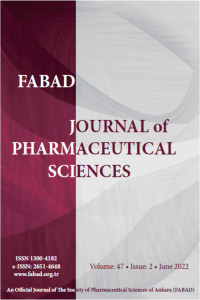Öz
Kaynakça
- Agalloco, J. (1995, Jul-Aug). Validation: an unconventional review and reinvention. PDA J Pharm SciTechnol, 49(4), 175-179.
Öz
Process validation, which is defined as documented evidence
that the process, operated within established parameters, can
perform effectively and reproducibly to produce a medicinal
product meeting its predetermined specifications and quality
attributes. In the last decade, continuous process verification has
been introduced, which is based on a continuous monitoring
of manufacturing performance. This approach is based on the
knowledge from product and process development studies and/
or previous manufacturing experiences. Continuous process
verification may be applicable to both a traditional and enhanced
approach to pharmaceutical development. Process validation
incorporates a lifecycle approach linking product and process
development, validation of the commercial manufacturing
process and maintenance of the process in a state of control during
routine commercial production. Many pharmaceutical companies
are adopting the principles of Quality by Design (QbD) for
pharmaceutical development and manufacturing, which enables
enhanced process understanding, and a more systematic and
scientific approach to pharmaceutical development, so that better
controls can be implemented. QbD is considered in examining
validation within a product lifecycle framework. In this review,
after reviewing the process validation approaches that are described
in the current national and international guidelines, the focus
will be on QbD and its significance in process validation.
Anahtar Kelimeler
Drug production Process validation Quality by Design (QbD) PAT Continuous process verification
Kaynakça
- Agalloco, J. (1995, Jul-Aug). Validation: an unconventional review and reinvention. PDA J Pharm SciTechnol, 49(4), 175-179.
Ayrıntılar
| Birincil Dil | İngilizce |
|---|---|
| Konular | Eczacılık ve İlaç Bilimleri |
| Bölüm | Derleme |
| Yazarlar | |
| Yayımlanma Tarihi | 1 Ağustos 2022 |
| Gönderilme Tarihi | 17 Kasım 2021 |
| Yayımlandığı Sayı | Yıl 2022 Cilt: 47 Sayı: 2 |


